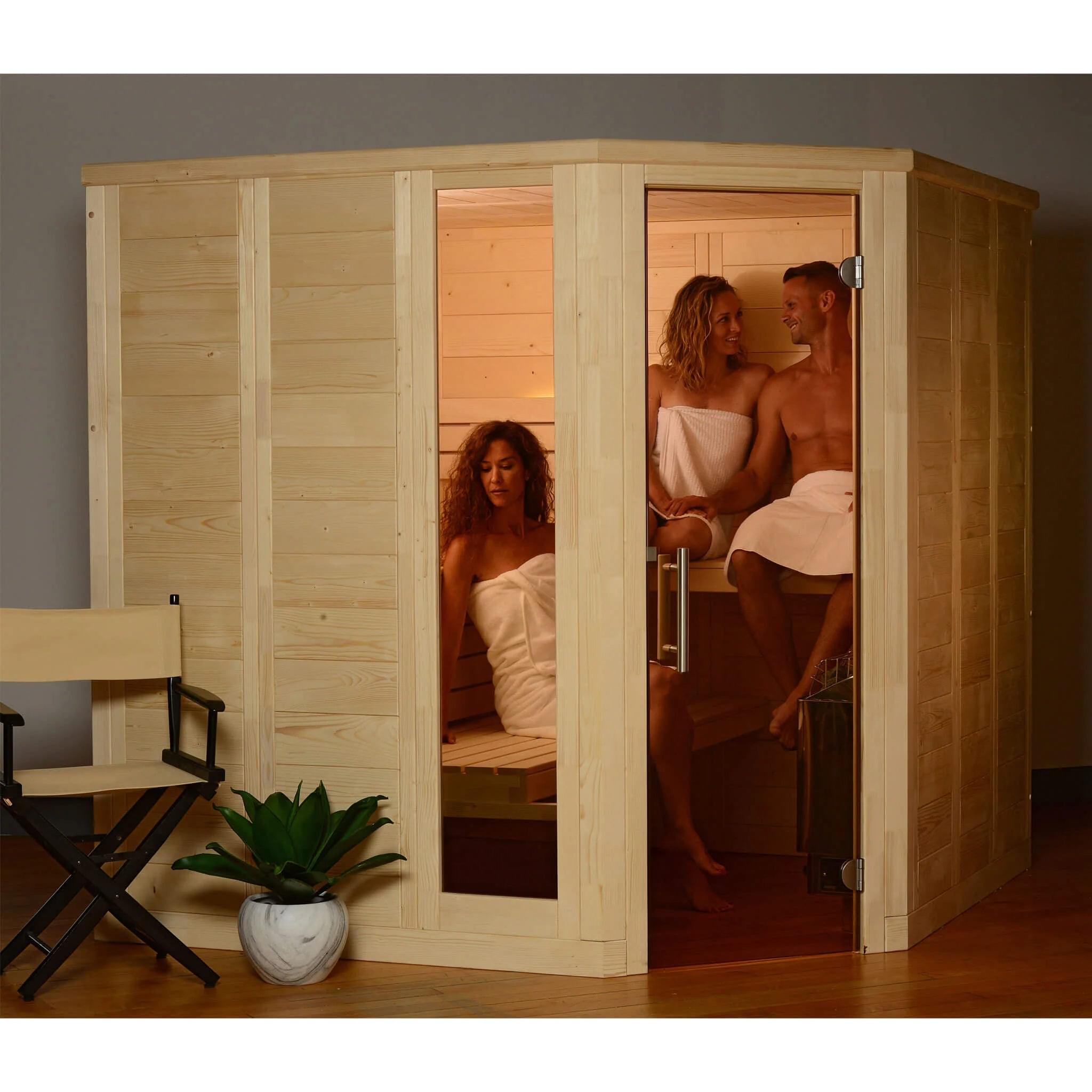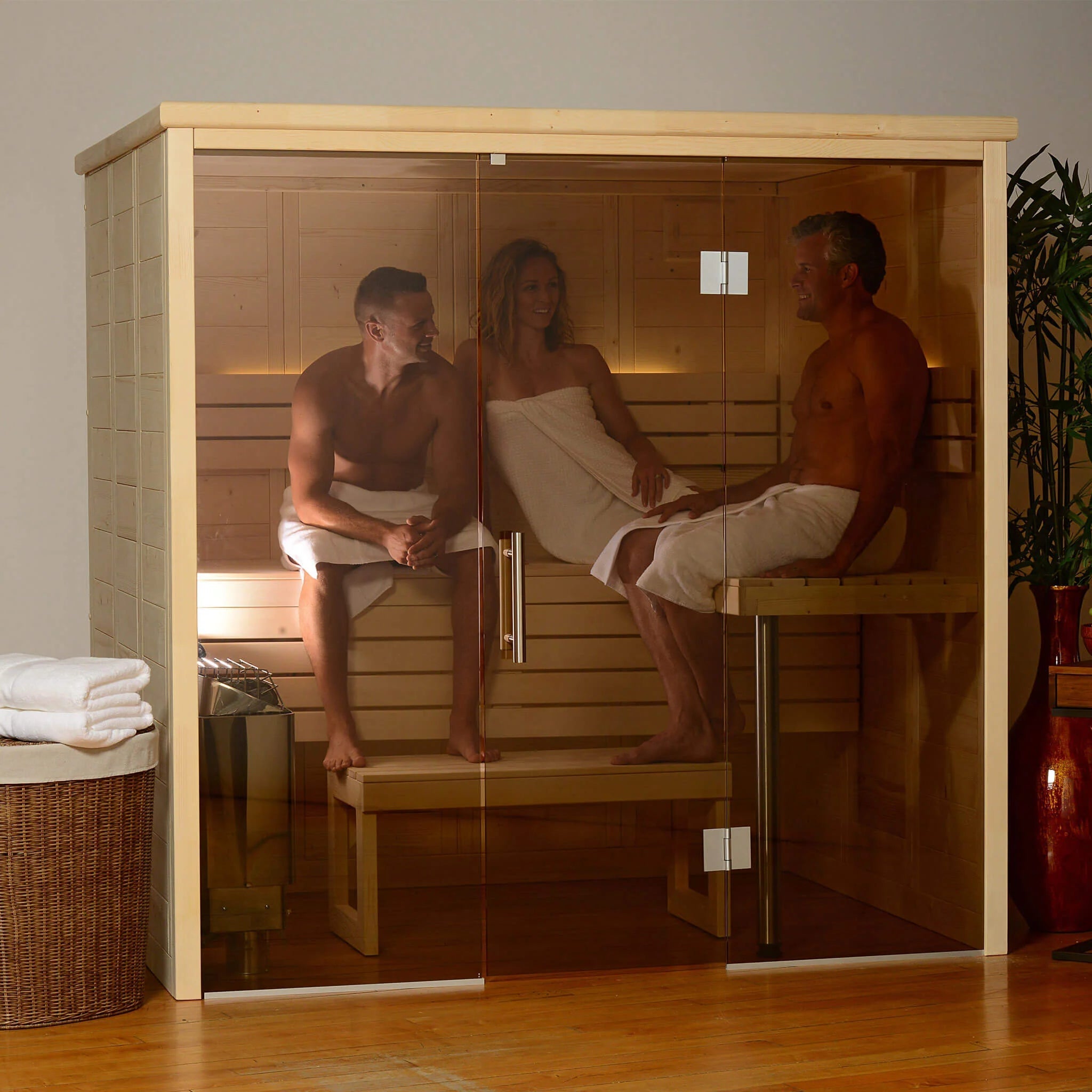Our Traditional Sauna Statements
Our Traditional Sauna Statements
Blog Article
Not known Details About Traditional Sauna
Table of ContentsSome Of Traditional SaunaThe Single Strategy To Use For Traditional SaunaSome Known Details About Traditional Sauna Little Known Facts About Traditional Sauna.The Ultimate Guide To Traditional Sauna
Many of the weight shed in a sauna is water loss and is re-gained upon rehydrating. However, certainly sauna can be a fundamental part of a healthy and balanced weight reduction program. To take a look at the differences between conventional and IR saunas, I will separate these right into proven, academic, and produced distinctions.Therefore, the best factor in the saunawhich goes to the ceiling straight above the sauna heateris normally in between 185 and 190 F. Claims that a typical sauna goes beyond 200 F is merely not real and not suitable for electric saunas sold in the US. The temperature level for a far-infrared sauna is generally established in between 120 and 140 F; nevertheless, unlike the conventional sauna, the goal in and IR area is not to attain a high temperature level.
As a result of this, the temperature distinction is virtually pointless, considering that profuse sweating results in both sauna kinds, however the method of warming the body is various. In an IR sauna the bather will really feel hot and will sweat a lot, however at much reduced temperatures. Traditional Sauna. Thus, if the objective is to spend longer time periods in the sauna, the IR sauna is a great choice

3 Simple Techniques For Traditional Sauna

When the heat is attained, the components cycle on and off to maintain the heat. Traditional Sauna. Many typical sauna users delight in pouring water over the rocks to produce heavy steam to increase sauna moisture degrees. The advantages of pouring water over the rocks include: making the space a lot more comfy, dampening the nasal flows, and enabling the usage of aromatherapy by mixing important oils with the water
In a far-infrared sauna, the warm front penetrate the body to efficiently heat up the body and elevate the body core temperature level. To accomplish this boosted temperature level, Far-infrared emitters develop infrared power which is close to the very same wavelength as that which the body normally emitsoften referred to as the "Vital Range" of 7 to 14 microns), so the power is well received by the body.
When the energy goes into the body, it causes the body temperature to enhance and eventually results in perspiration. In an infrared sauna it's important for the emitters/heaters to stay on almost regularly. Because there is no mass of rocks to retain warm, the sauna will certainly cool if the emitters shut off.
The Best Guide To Traditional Sauna
As mentioned over, the sauna bather in an infrared room wishes to position himself before operating emitters to obtain maximum advantage from the heat. The home heating time for both areas can be very various, depending on just how the rooms look these up are made use of. For a conventional sauna, a bather needs to enable 30-40 mins for the room to attain a desired temperature level and to properly pre-heat the rocks.
A well built sauna will commonly achieve a temperature level of 150-160 F in regarding 30-40 mins. For hotter temperature levels, the space may require to warm for a longer duration.

Standard saunas have a tendency to be larger (hence make use of even more electrical power) than infrared saunas, although conventional saunas are certainly readily available in one and two person dimensions. For a two-person standard sauna, 5x6 or 5x7 size is most prominent. The leading bench can pleasantly seat 2 or 3 individuals and is also long enough to rest throughout the sauna session.
Our Traditional Sauna Ideas
The typical price per kWH of electrical energy in the united state is around $0.11 - Traditional Sauna, so a 4.5 kW heating system will set you back published here approximately $.50 to compete one hour, if the heater runs constantly for one hour. Generally a sauna heating system will run for 75% of the initial hour and 50% of subsequent hours on because the components cycle once the set temperature is attained
A 2 person far-infrared space is generally physically smaller than a typical sauna, frequently regarding 4' x 4' or smaller sized. The IR heating unit is usually 1.5-1.7 kW making use of a 120 volt 15 amp plug-in solution. Since the space can be utilized earlier than a sauna room, we will assume the area is made use of for to of an hour including warm up time.
There is a hardly ever discussed difference in the social experience between the two spaces. While our society has actually shed several of the social advantage of the traditional sauna experience, it can be very socially gratifying. From family time in the sauna, to heart-felt conversations with loved ones, to sauna partiesthe standard sauna experience can cause intimate interacting socially.
Traditional Sauna Things To Know Before You Get This
Most greater end infrared rooms consist of colored light treatment, sound systems and full-glass fronts.
Report this page